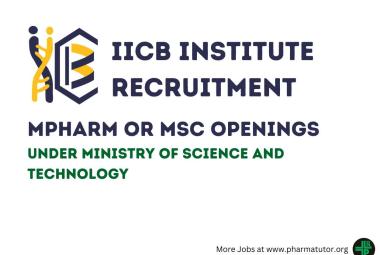 ABOUT AUTHOR
ABOUT AUTHOR
Mrudul Kansara
Sr. Executive, HRD-Marketing
TROIKAA PHARMACEUTICALS LIMITED
mrudul.knsra@gmail.com
Don’t know the name, but someone great had said that reading is one of the best way of learning. If you read the same book for more number of times you can learn new things each time you read that book. Having studied pharmacy for 7 years including diploma, degree & post graduation, I had to refer many subjects repeatedly. To add to this, I got my professional assignment also surrounding my passion for pharmacology (Imparting training to newly selected BE/BMs for cardiac products apart from conducting ACE session as a part of HRD MARKETING team in Troikaa Pharmaceuticals, which required me to refer those subjects again).
Integrating two different horizons can sometimes lead to development of new concepts & learning. With this thought process, I would like to share my learning about effective leadership traits from a very different subject i.e., Pharmacology.
In order to make it simple & easy to understand, I have tried to use minimum technical words.
Characteristics of a highly effective leader: learning from Pharmacology.
Leader as a CATALYST
A Catalyst or Enzyme is a substance that increases or potentiates rate of a chemical reaction. For example, Protease is an enzyme in our body which is responsible for digestion of proteins we consume in our diet. Protease acts as a facilitator which potentiates digestion of proteins. That means even if proteins are present in our body, they can only be absorbed and utilized if the catalyst (Protease) responsible for its digestion is present in our body.
An effective leader should have similar characteristic. A leader should act as a catalyst for improving or potentiating the efficiency of his team members. He should facilitate the environment required to bring out the optimum performance by each team member. A leader with catalytic property will be able to accomplish the tasks given before deadlines, will be able to provide work-life balance to his team and ultimately will create a win-win-win situation for him, his team as well as for the organization.
A prominent example of an effective leader with catalytic property is father of our nation, Mahatma Gandhi, who acted as a catalyst for all Indians to fight for freedom, which brought together entire country and ultimately earned freedom for India from British Empire.
Leader as an AGONIST & not ANTAGONIST
An agonist means any substance (drug) which has both affinity (ability to bind to a site) & intrinsic activity (ability to produce therapeutic response). Example – Tramadol (Zyrotram P Rapid) is an agonist. It binds with opioid receptors (affinity) and provides pain relief (intrinsic activity).
An antagonist means any substance which has only affinity but no intrinsic activity. Example – Telmisartan (Telmikaa) is an antagonist. It binds with receptor & blocks it and just do not allow other substances to bind with that receptor.
From the definition, it is evident that an effective leader should be an agonist and not an antagonist. An agonistic leader is the one who has not only developed strong bonding among team members but also favors & facilitates the growth and development of his team members. An agonistic leader gives success credit to his team.
On the contrary, an antagonistic leader blocks the growth & success of his sub-ordinates. An antagonist takes full credit of success and does not allow anyone to grow. He is always insecure about his position and end up losing the trust & support of his team members.
True Leader exhibits SYNERGY
Synergy/Synergistic action – When two drugs used in combination exhibit better therapeutic effect than the individual effects, that combination is said to exhibit synergy. For example, Dynapar tablet. (Diclofenac + Paracetamol) when combined together, they exhibit better therapeutic effect than individual drugs. So it is called synergistic action.
A true leader should be synergistic with his/her team members. Leader should always try to add value to his sub-ordinates work, guide them to perform better, encourage team to learn new things and constantly work to improve his & his team’s weaknesses. In a nut shell, when a leader joins his team mate, it should result in more productive work rather than fault findings & blame games.
Leader as an ABSORBENT
Absorbent is a substance which has ability to soak up liquid.
An effective leader is a cushion between his superiors & his sub-ordinates, which absorbs the extra pressure or extra work load and acts as a soothing agent who streamlines the tasks and does not make his team feel the heat of extra work load or pressure. An absorbent leader acts the other way also, calming & inspiring his sub-ordinates to work with dedication in case of any dissatisfaction among team members. A leader acts as a bridge between his organization & sub-ordinates, constantly working for welfare of his team and organization.
In this case, let me share with you my own example. During my two years & one month experience in Pharma sales, I worked under two bosses. My first boss might not be very good at medical knowledge, but he was very empathetic and was a good absorbent. I was always treated as an important member of his team. I never felt sales pressure and my job was full of joy, achieving target was our habit. Exactly opposite to his predecessor, my second boss was technically sound but with very low emotional quotient. He used to shout on us when the task was not achieved, blamed team members for failures, and he had only one technique of achieving things, putting pressure. The second boss did not understand this important trait of a leader. The team’s performance started deteriorating and gradually team started breaking up.
A COMPATIBLE Leader
Compatibility – When two drugs given in combination, are able to produce beneficial effects without any unwanted reactions or problems, they are said to be compatible with each-other. When two incompatible drugs are combined together, they either damage the formulation or produce unwanted side-effects.
A better leader is the one who is compatible with his team members. Compatibility in this context can be co-related with manager having sympathy, empathy, harmony, rapport, togetherness, agreement etc. It can’t get better, if team members have a feeling that their leader is one amongst them and not an out-sider. Imagine a situation where leader and subordinates are incompatible with one another, it will either break the team or it will become a liability for the organization, ending up in lose-lose situation.
In case of compatibility, I would like to share one more of my personal experience. During my college tenure, I was the captain of my cricket team. During diploma studies, we turned out to be the champions of our college. Later on few of my cricket team mates including me joined the same college for graduation and again wanted to make our mark in cricket, but only six team members of our previously champion team joined that college. So, we thought of adding five other best players of our new class to make best possible cricket team, ignoring our other previous diploma class mates who also joined same college, but were not a part of our cricket team during diploma. They were reasonable cricket players & shared better bonding with us. This activity prompted them (ignored players) to form a team of their own and that new team defeated us consecutively for three years. It was only after few years when I realized that old players & new players of my team including me were not compatible with one-another. We were better players on paper but our compatibility & team bonding were not comparable to our opponents.
The following two terms are addressed considering organizational managers as leaders.
MANAGO-KINETICS
I have derived this word from Pharmacokinetics, which means what human body does to a drug when it is consumed. Here we can say Managokinetics means how team members interact or react to their leader?
This phenomenon can be co-related with how the team members or sub-ordinates obey or support their leader in their routine job functions, specials tasks or assignments, working overtime whenever needed, additional support etc. A leader should periodically judge his MANAGO-KINETIC profile by asking for support as mentioned above, in order to understand his acceptance among team members.
MANAGO-DYNAMICS
Similarly, this word was derived from Pharmacodynamics, which means what drug does to human body when it is consumed.
MANAGO-DYNAMICS refers to how manager interacts with his/her subordinates?
The concept is exactly opposite to that of MANAGO-KINETICS. Here the approach, response, nature or attitude of a manager is tested. A manager’s willingness to help subordinates in need situation, manager’s ability to understand the problems of his subordinates can be gauged to measure the MANAGO-DYNAMIC profile of a manager.
Managers can improve their MANAGO-KINETIC & MANAGO-DYNAMIC profile by leading from the front, setting examples, developing team bonding, giving different ideas to tackle difficult situations, improving emotional quotient, listening to grievances or dissatisfying factors among team members, appreciation for better performance etc. The list can be endless, but in order to achieve success a manager should have better MANAGO-KINETIC & MANAGO-DYNAMIC profile.
“A great leader’s courage to fulfill his vision comes from PASSION, not POSITION.” – JOHN MAXWELL











.png)

